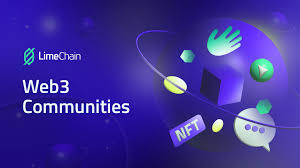The Web3 ecosystem comprises several key components and technologies that aim to redefine the way we interact with the internet. Here are some of the fundamental elements of the Web3 ecosystem:
- Blockchain Technology: Blockchain forms the foundation of Web3 by providing decentralized and secure transactional and data storage capabilities. It enables transparency, immutability, and trust through distributed ledger technology.
- Cryptocurrencies and Tokens: Web3 incorporates cryptocurrencies and tokens as digital assets that facilitate value exchange within decentralized applications (dApps) and platforms. Cryptocurrencies like Bitcoin and Ethereum are commonly used, and tokens can represent various digital or physical assets.
- Decentralized Applications (dApps): dApps are applications built on top of blockchain platforms. They leverage smart contracts, which are self-executing contracts with predefined rules, to automate interactions and transactions. dApps are typically open-source, transparent, and operate in a decentralized manner without relying on a central authority.
- Smart Contracts: Smart contracts are self-executing contracts with the terms and conditions directly written into code. They automatically execute transactions and enforce agreements without the need for intermediaries. Smart contracts enable automation, efficiency, and transparency in various industries.
- Decentralized Finance (DeFi): DeFi refers to financial applications built on blockchain platforms that aim to provide traditional financial services in a decentralized manner, such as lending, borrowing, trading, and asset management. DeFi eliminates intermediaries and offers greater accessibility and transparency.
- Decentralized Identity (DID): DID is a concept that enables users to have control over their digital identities. It allows individuals to manage their personal data securely, maintain privacy, and selectively share information without relying on centralized identity providers.
- Interoperability Protocols: Interoperability protocols facilitate communication and data exchange between different blockchain networks and dApps. They enable seamless interaction and interoperability across multiple platforms, improving scalability and usability.
- Web3 Browsers: Web3 browsers, also known as blockchain browsers, are specialized web browsers that enable users to access and interact with dApps and blockchain networks. These browsers provide the necessary tools and interfaces to navigate the decentralized web.
- IPFS (InterPlanetary File System): IPFS is a distributed peer-to-peer file storage system that allows the storage and retrieval of files in a decentralized manner. It enables content addressing and ensures the availability and permanence of data across the Web3 ecosystem.
- Governance Mechanisms: Web3 emphasizes community-driven governance models, where decision-making is decentralized and involves token holders or stakeholders. Governance mechanisms enable participants to have a say in the development, upgrades, and decision-making processes of blockchain networks and dApps.
These components and technologies collectively contribute to the vision of Web3, which aims to create a more decentralized, transparent, and user-centric internet experience. It promotes data ownership, privacy, and new economic models through the utilization of blockchain and decentralized technologies.
SHARE
